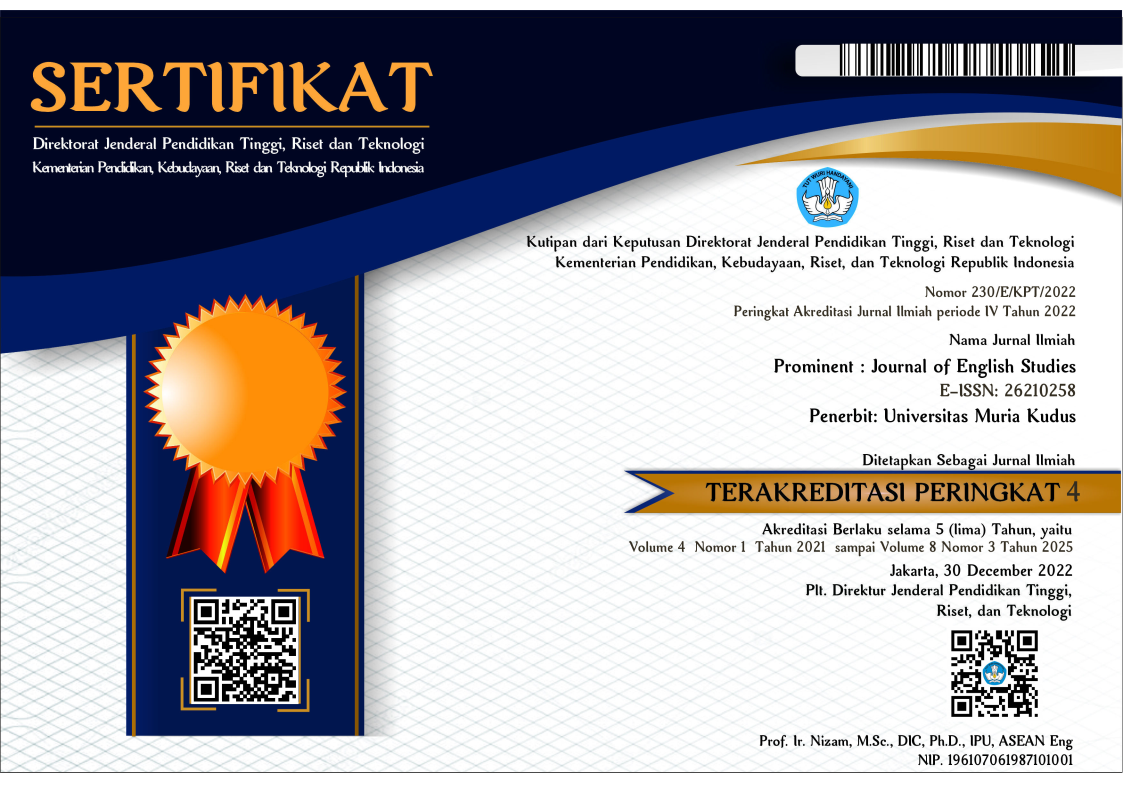THE STUDENTS’ LEARNING STRATEGIES IN INCREASING SKILLS
Abstract
Full Text:
PDFReferences
Cohen. A. D. 1990. Language Learning: Insights Jor Learners. Teachers. and Researchers.NewYork:Newbury House
Crosswell. Leanne (2009) Classroom management : developing your own approach to managing the classroom. In Millwater. Jan&Beutel. Denise A. (Eds.) Stepping out into the Real World of Education. Pearson Australia. French Forest. New South Wales
Dörnyei. Zoltan. 2001. Research Methods in Applied Linguistics. New York: Oxford
Miles. M. B..& Huberman. A. M.. 1994. Qualitative Data Analysis: An Expanded Sourcebook (2nd edition). Thousand Oaks. CA: Sage Publications. Inc.
Naiman. N.. Frohlich. M.. Stem. H.H..and Todesco. A. 1978. The Good Language Learner. Toronto:The Ontario Institute for Studies inEducation.
O'Malley.J. M. dan Chamot. A. U. 1990.Learning Strategies in Second LanguageAcquisition. NewYork:Cambridge University Press.
Office of Vocational and Adult Education. (2006). The Adult Learner Module 3: Curriculum; Basic Literacy Skills. Available from: http://www.c-pal.net/course/module3/m3_basic_lit_skills.html
Oxford. R. L. 1990. Language Learning Strategies: What Every Teacher Should Know. New York: Newbury House.
Oxford. Rebecca. (2001). Integrated Skills in the ESL/EFLClassroom. ERIC Digest ED456670. Washington. DC: ERICC learing house for ESL Literacy Education. Available from: http://www.ericdigests.org/2002-2/esl.htm
SIL International. (1999). The Four basic language skills. Available from: http://www.sil.org/lingualinks/languagelearning/OtherResources/GudlnsFrALnggAndCltrLrnngPrgrm/FourBasicLanguageSkills.htm
Sugeng. Bambang. 2004. Strategi Belajar Bahasa Inggris sebagai Bahasa Asing Kaitannya dengan Faktor-Faktor Demografik pada Pembelajar Dewasa. Universitas Negeri Yogyakarta.
DOI: https://doi.org/10.24176/pro.v3i1.4704
Refbacks
- There are currently no refbacks.
Prominent Journal of English Studies is licensed under a Creative Commons Attribution-ShareAlike 4.0 International License.
Dedicated to:

in Collaboration with APSPBI:





